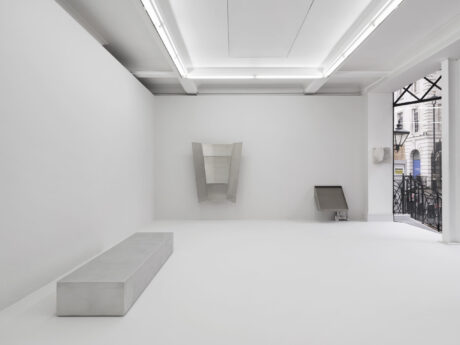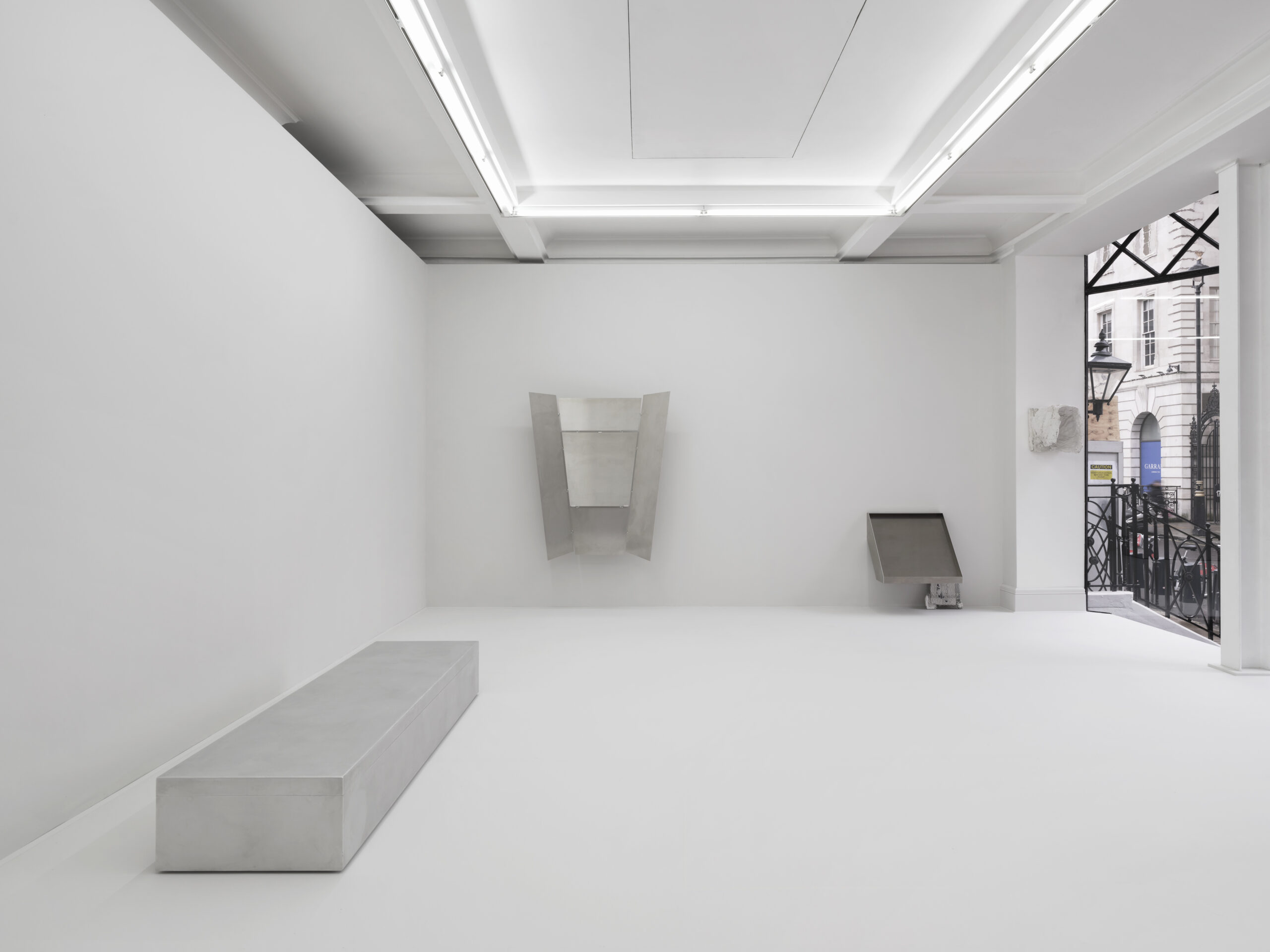
When Thea Djordjadze stages an exhibition, there might be changes of location, height, placement of works as well as floor finishes throughout the run up to a show. Veronica Simpson checks in on her process the day before opening at Sprüth Magers London.
Nothing is what it seems with Thea Djordjadze’s work. That’s her intention – to disrupt and distort perception, to heighten ambiguity, play with your sense of scale, space and texture, even the idea of what her work is. The polished metal or slim-wooden-framed structures that she is fond of inserting onto a wall, a floor, a ceiling, look solid, heavy, infrastructural, but are often fragile, feather-light. They inhabit a kind of liminal space between infrastructure and furniture, between sculpture and painting.
For the Georgia-born, Berlin-based artist’s latest show at Sprüth Magers, London, she has transformed the Regency solidity of the first gallery into an ethereal, dream-like space, hiding its robust wooden floorboards under a platform coated in canvas and painted the same pale, cloudy gray as the walls and ceiling. This almost seamless plane of matte, domestic paint makes her forms appear to float – a long, upholstered bench (or is it a ladder?) drooping over the edge of the floor; a slimline steel coffin (or is it a bench) parked against a wall; a pair of shiny metal trays protrude diagonally from the wall, one of them partially obscuring a crisply folded white shirt encaged in chickenwire. Apparently this shirt was first displayed within the tray. Now it is behind it. What does all of this mean?
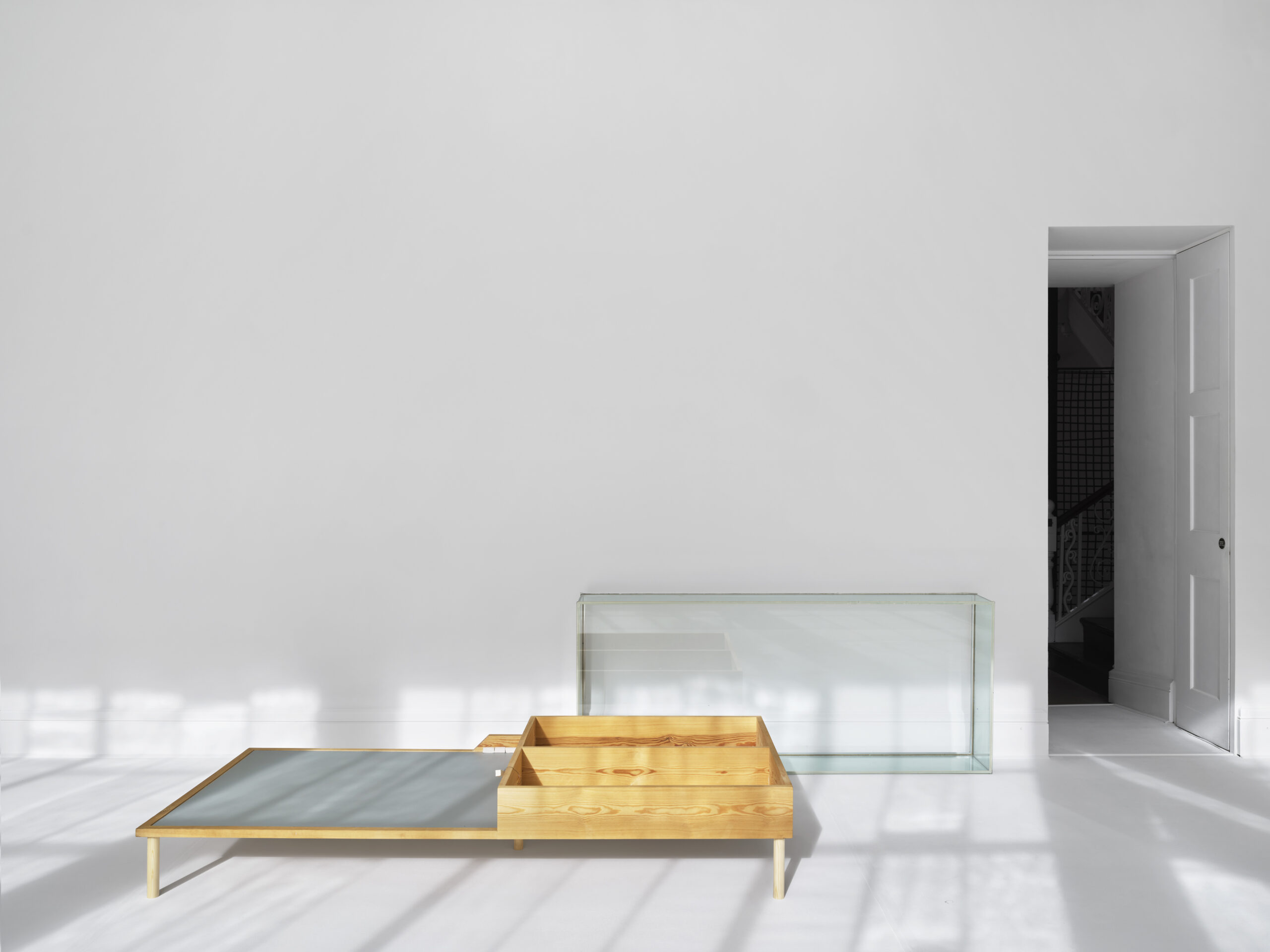
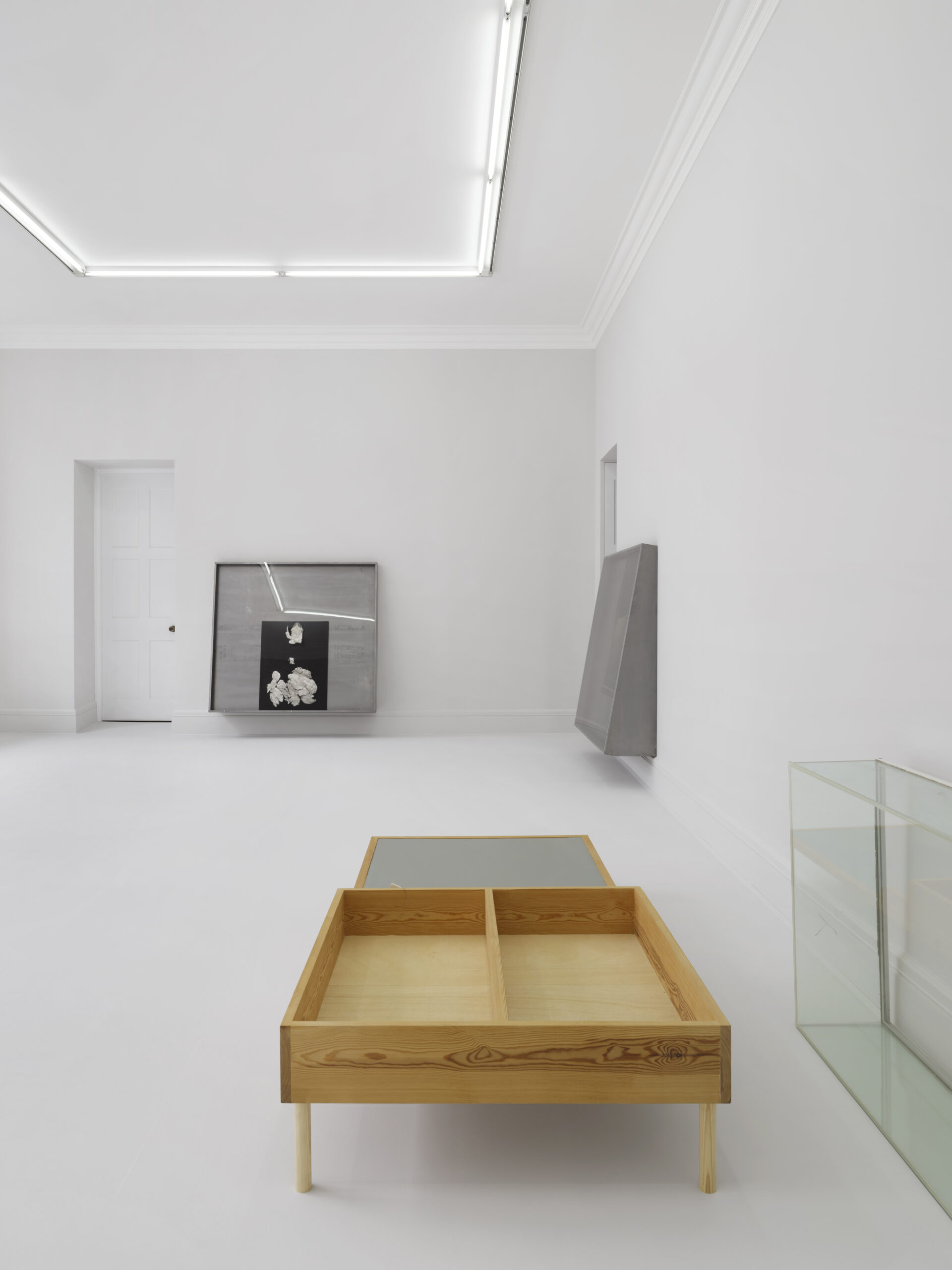
Djordjadze aims with every exhibition to engage with the ‘genius locii’ of a place in order to situate her sculptures, arranging and rearranging works in the week or two prior to an exhibition opening, right up to the final moments, to draw out maximum tension between object and setting. The aforementioned arrangement in the first gallery has only just been approved, the day before the show opens – they had to wait for the paint to dry. We are asked to wear little blue plastic slippers over our shoes to protect the floor as we explore, though once the show is open this pristine surface will be covered in footprints, scuff marks, dirt and grease.
Her pieces are arrayed over two floors of this ornate 18th century building, both in the galleries and between them. In an opulent staircase with black, wrought iron lift and curving balustrades, two gleaming sheets of mirror-polished steel fill almost an entire wall; you wouldn’t know they were art works, except that one is curling ever so slightly at the lower edges, lifting away from the skirting board. Meanwhile, the artist is half way down the stairs creating a kind of painting on a window. With her hands clad in thin, blue surgical gloves, she is smearing dark blue paint on one of the four window panes; the other panes feature similar smears of pale blue, red and yellow, although these lower floors aren’t even part of the exhibition – it’s all about ensuring that the right light or mood is reflected from this window onto those polished steel panels.
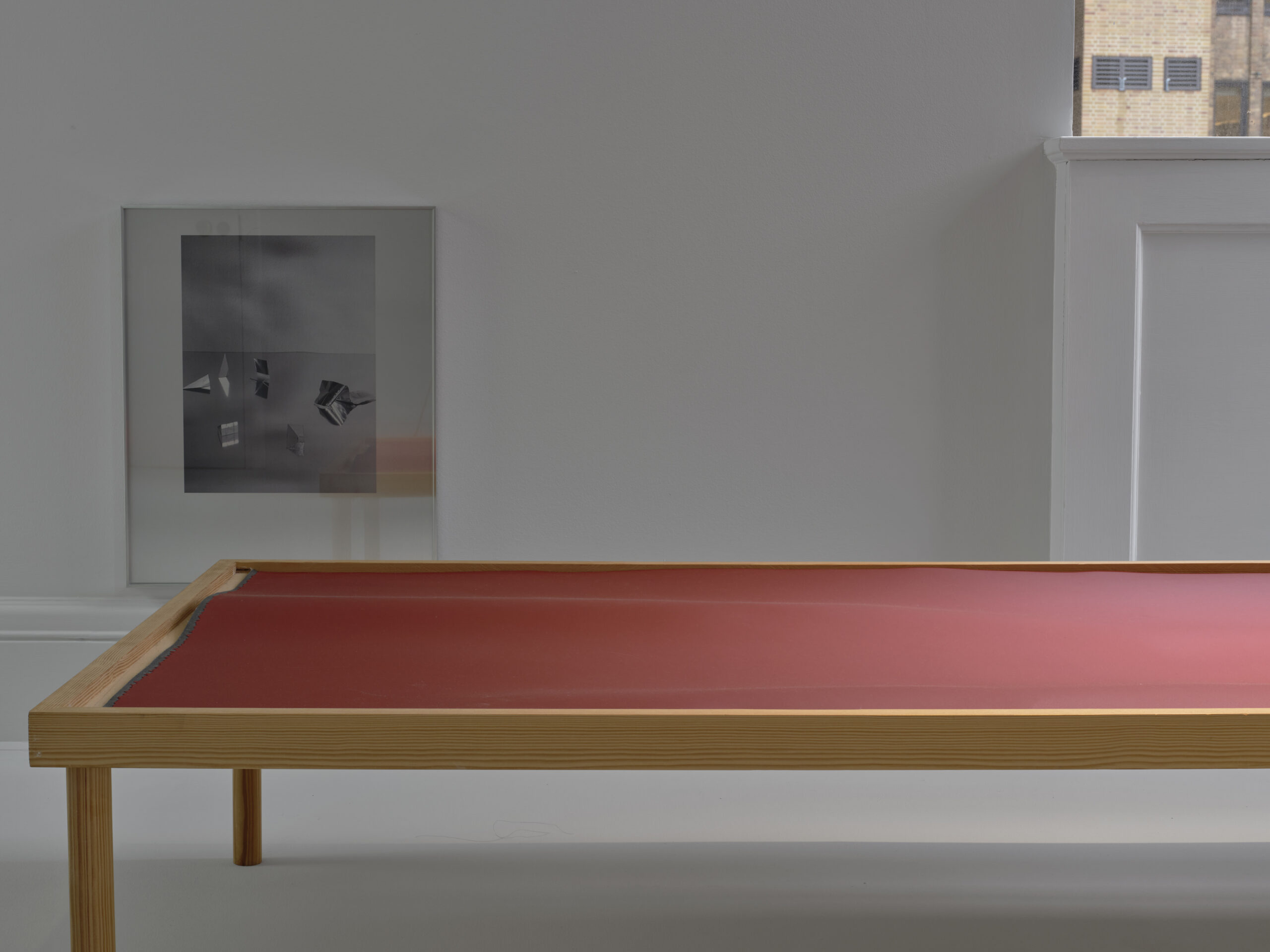
Taking a break from her work, she explains: ‘For me the building and the design and the architecture are very important. The sculpture is making decisions, it’s telling me where to go, how to be positioned. It’s not only me, it’s the interaction between me and the sculpture and the building.’
Because of this interactive process, a Djordjadze instal is not like any other artist’s instal. Together with her gallerist or curator, she selects a range of works about six months before the show, to be shipped to the gallery from its various locations. Two weeks before opening she will start choosing the pieces and physically arranging them in the rooms, shifting them not just from room to room but sometimes wall to floor, avoiding the ‘obvious’ at every stage, perhaps moving them further up the wall to very near the ceiling or lower down to sit right on the skirting board if needs be.
If everything is so uncertain, how does she know which pieces to bring? She casts the net wide, it seems: ‘I bring a lot of pieces. I start wherever the pieces are stored, and then I hang one piece somewhere, and start to wander around and then… I listen to the void, listen to the building, to the pieces. The rest of the pieces that I don’t use they go somewhere in storage. Sometimes, if I have enough space, I use one (gallery) space as open storage, so you can see the works I didn’t choose. I did that in two previous exhibitions, St Etienne (Musée d’Art Moderne et Contemporain (MAMC) and the Gropius Bau, Berlin.’
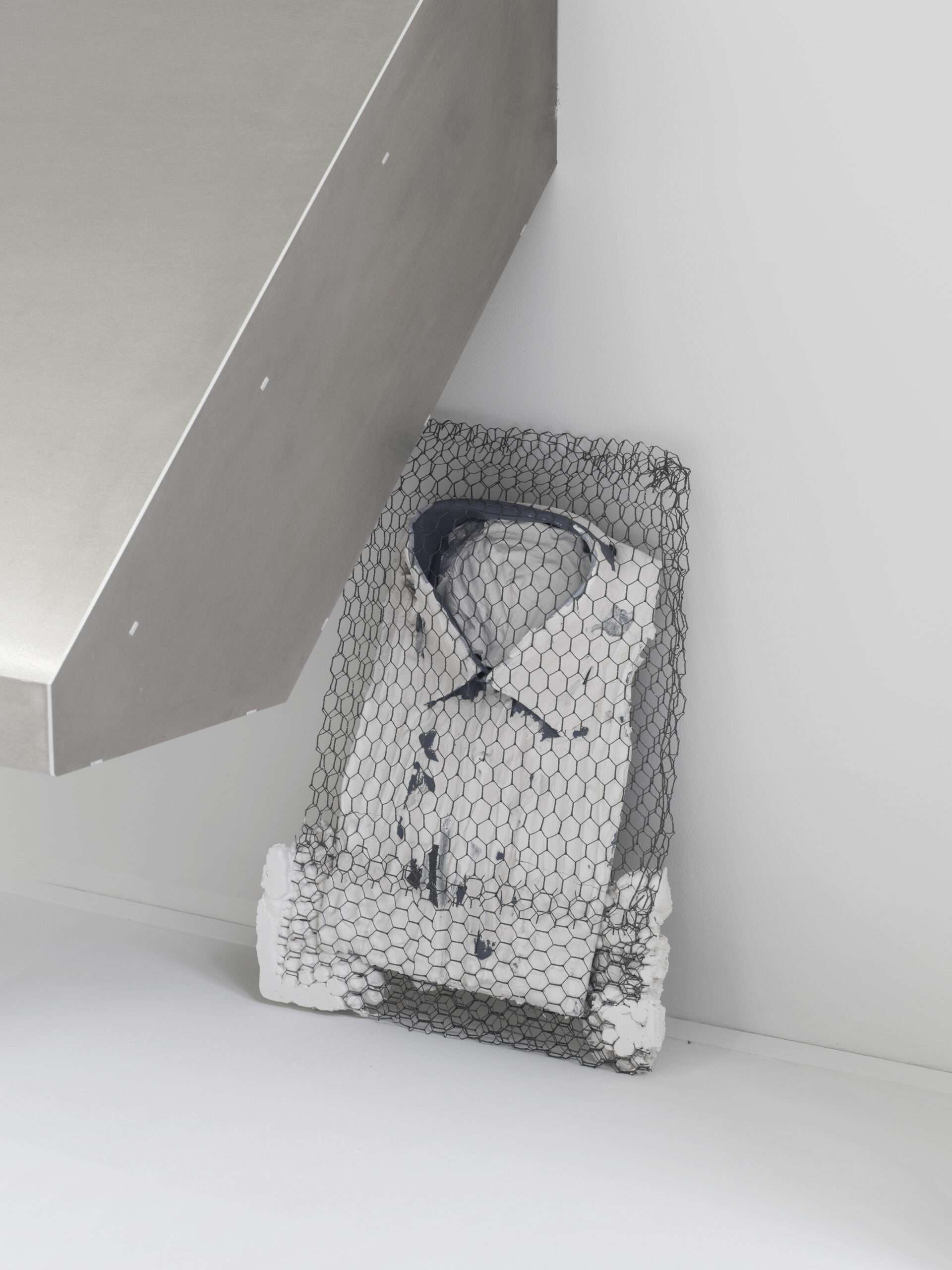
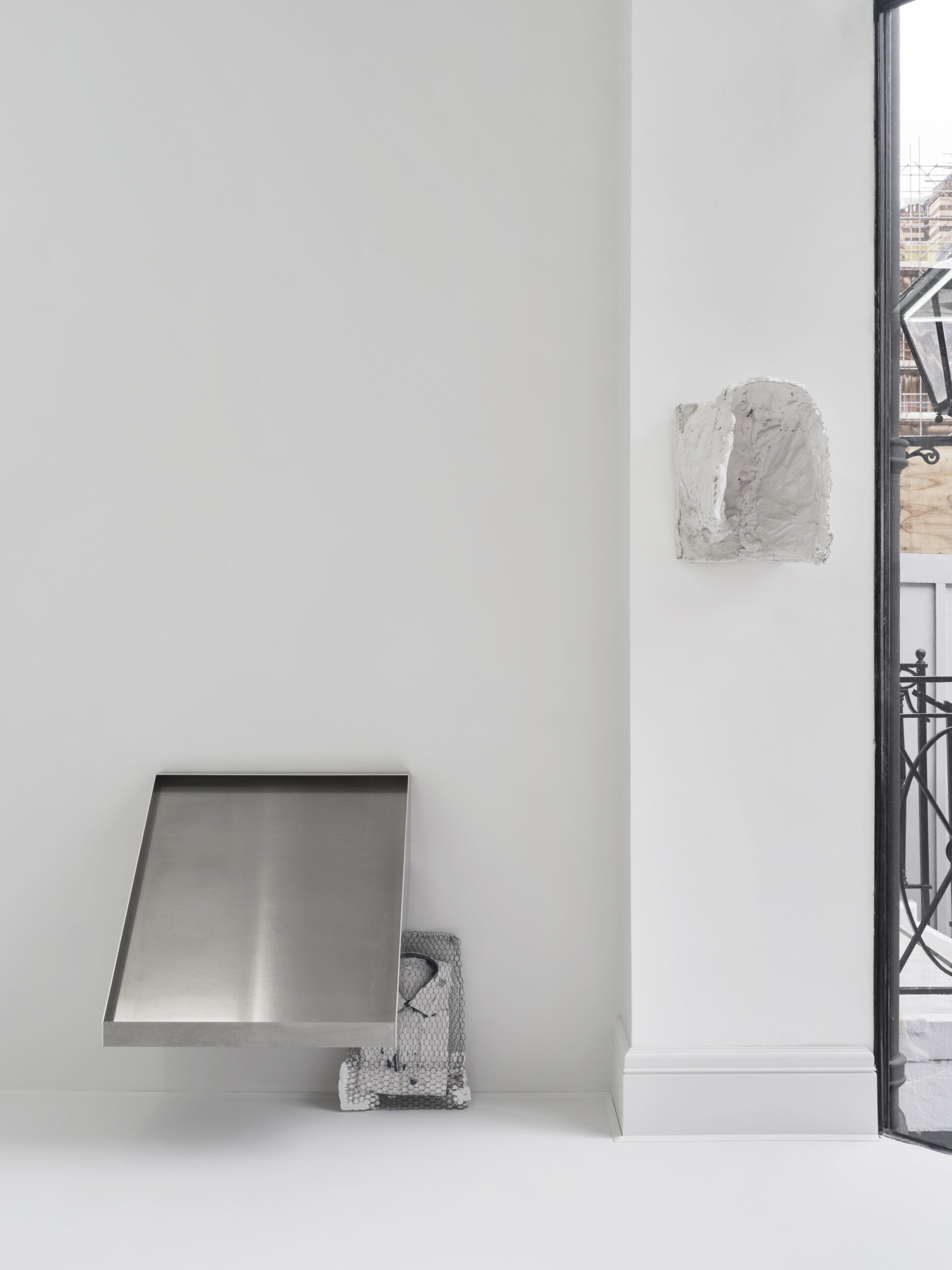
Djordjadze‘s process is about being supremely alert to the subliminal or subconscious messaging of form, material, light and texture, and how the architecture amplifies that message. For example, here in London she has taken one set of sculptures made to resemble thin, steel shutters, which were first laid horizontally against Sprüth Magers Berlin’s grandest gallery walls (for her 2016 show) to contrast with the verticality of the windows. Here, she has laid them almost edge to edge across two walls of a much smaller room which has no windows. In this way, densely clustered the room resembles a strongbox, a safe – even a prison of sorts; by the time of the opening, she has removed some of these panels so they’re arranged more like enlarged, ethereal mailbox flaps.
Given her interest in playing with spatial and material perceptions, I ask if she studied architecture at any point. She replies: ‘I studied painting in Georgia, then I went to Amsterdam for one year, continued painting, then one year in Dusseldorf, and then I stopped painting. I couldn’t paint any further. Rosemarie Trockel came to the art academy and I changed to her class. And this was very interesting because then painting came into the space. It wasn’t directly sculpture, I made a performance. I was painting the floors, and it’s like painting went more and more into the space. Composition wise, I started to think about the space as a painting but I wanted to go further so somehow it became more three dimensional, reacting into the space (in the same way) as I would react on the canvas. I treat space as a big canvas. But I can go around as the sculpture demands. I don’t know. I can’t name it. Is it sculpture? Is it painting? is it installation? It’s all those together. And then the building became so important… Now the building is more important than the object for me. I go to the spaces, investigate the building. It happens naturally now. The building takes over the object, the sculpture, the painting and they become part of it. Part of what the building is making.’
I ask if she visualises her works in space, like architects or designers can mentally conjure how a place might look in their minds’ eye before they transfer their ideas onto paper or screen. Apparently not. ‘I don’t see it transformed when I go in. I don’t see how it will be at the end. It is always this moment of performance in the space, my body in the space. So many of my colleagues, two months before a show opens, they know where everything goes. But for me, no. By changing and trying and moving you wait until you have this tension between the building, object, painting. It’s one special tension and then everything fits together. I cannot visualise it. You try and try and try until this tension is there. And then you know it has to be this way: you cannot change it.’
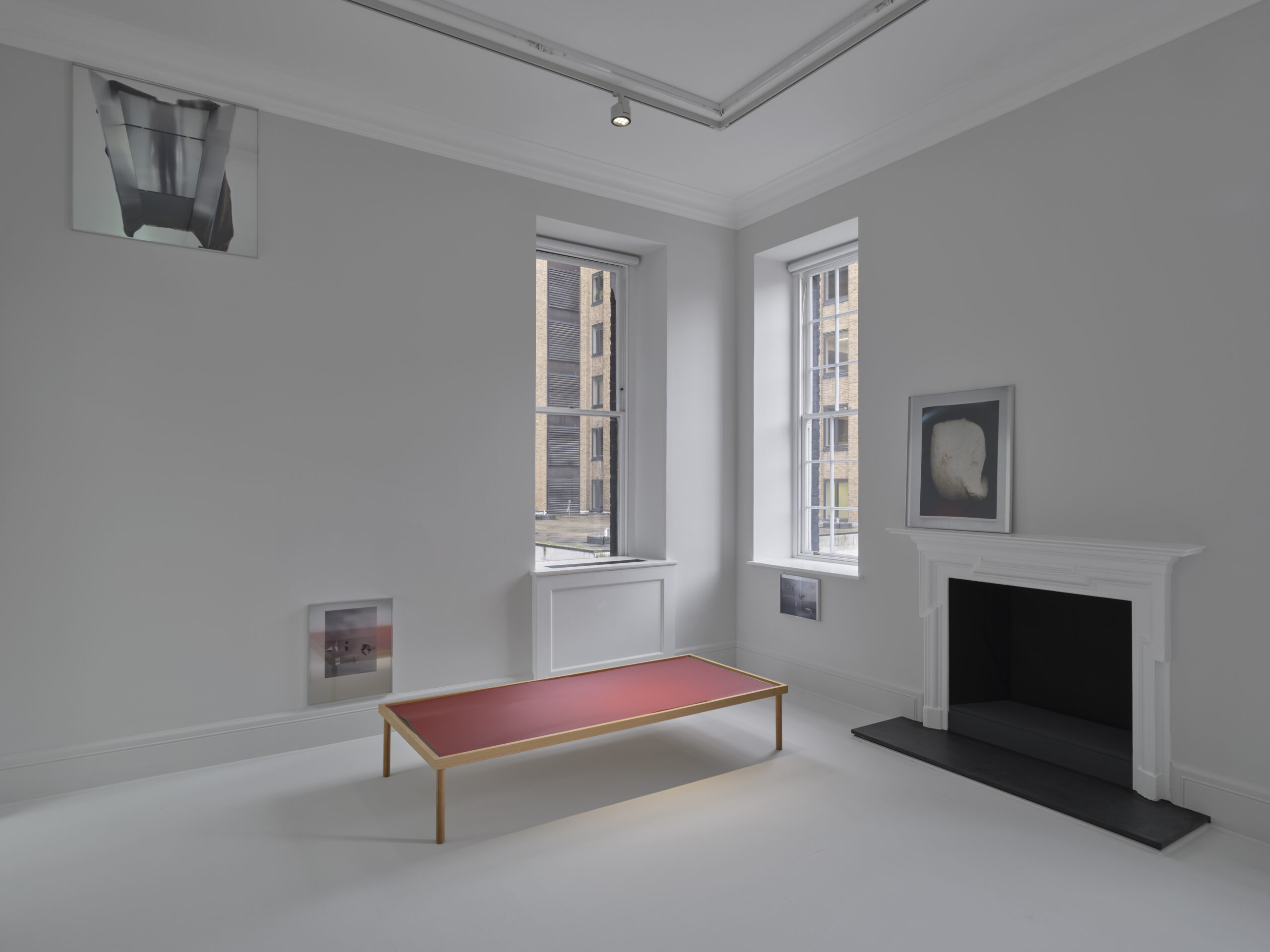
The works in the show range from 2009 to 2023. The 2009 work, a crinkled, faceless cowl, positioned at head height by the window of the first gallery, was first shown on the floor (at Kunsthahlle Basel, 2009) along with other plaster pieces. Of this era, Djordjadze says: ‘I was working with very fragile materials, plaster, everything that you can find within a radius of a few metres. I wanted things you can easily take with you and that will dissolve and disappear after. Then I started working with very thin metal structures. And I realised that solid metal can be very fragile. I started to experiment with it. Sometimes the solid surface is lying to you. It can be very… vulnerable.’ While she never studied it, architecture has a strong presence in her life, she admits. ‘My husband is an architect and his whole family are architects. My perception of architecture is very romantic and he, when I see them working, it’s very pragmatic. It’s very rules- orientated. We love modernist architecture but it’s so unforgiving. You cannot love a building which is cold… so machined. My husband says the best architecture is grass, and nature, and actually no architecture. And they wish they were as free as me because I don’t have to follow the rules, just the rules of the object and the object in space and it changes in every space. I am very far from the architectural approach. I appreciate the inner rules of the space.’
She tries to explain: ‘The windows are so present here and it’s all about transparency and reflection. I’m just taking with me the parts of the building I want to have even though people are not supposed to go down these stairs. I need the whole exhibition be one take, total.’ It seems the window treatment is necessary because of the way it interacts with the mirrored steel sculpture, so that nothing distracts from the presentation – or representation – that Djordjadze is manifesting through the sculpture and building interaction.
Written by Veronica Simpson
Thea Djordjadze’s Framing yours making mine is at Sprüth Magers, London
February 23rd – March 28th 2024
find out more